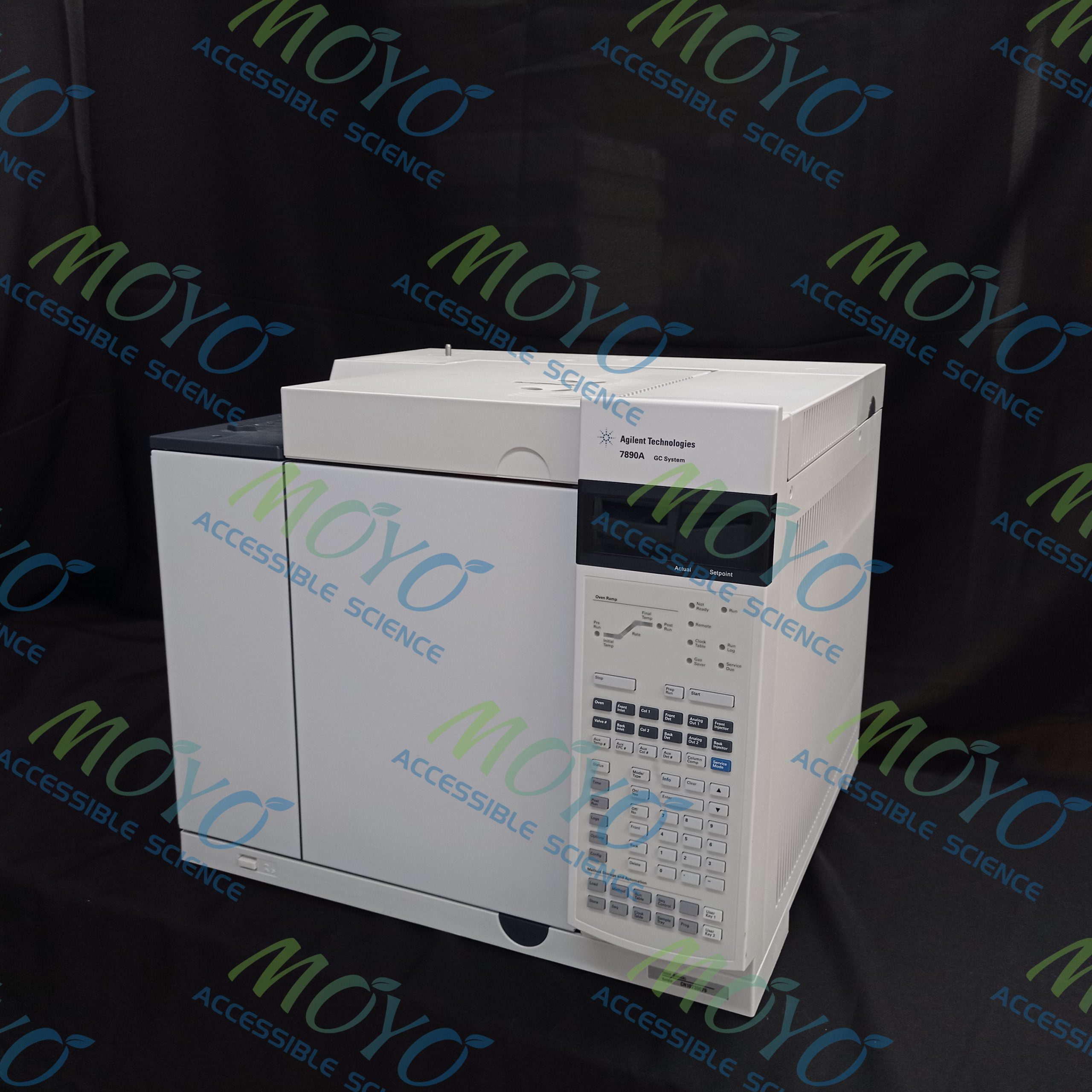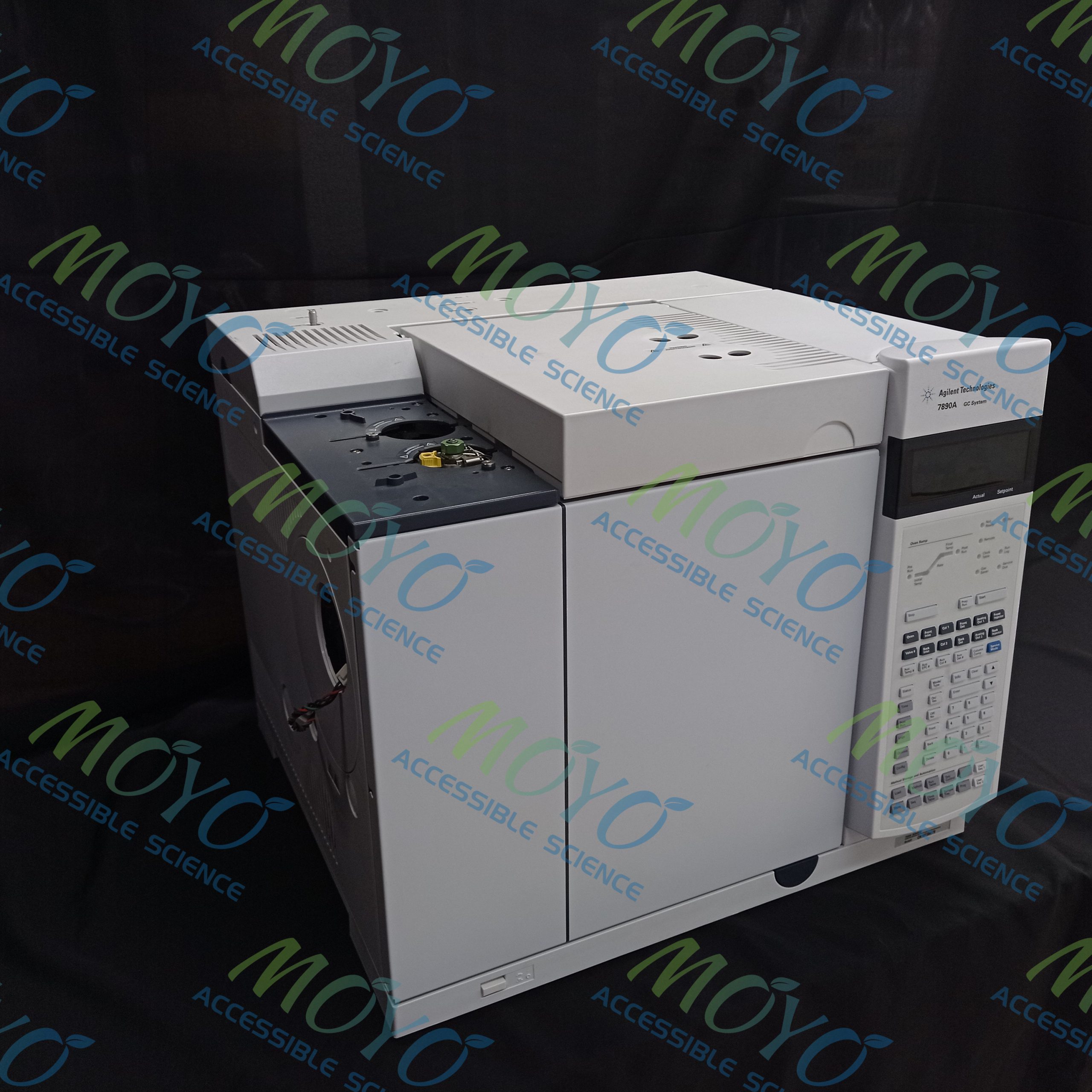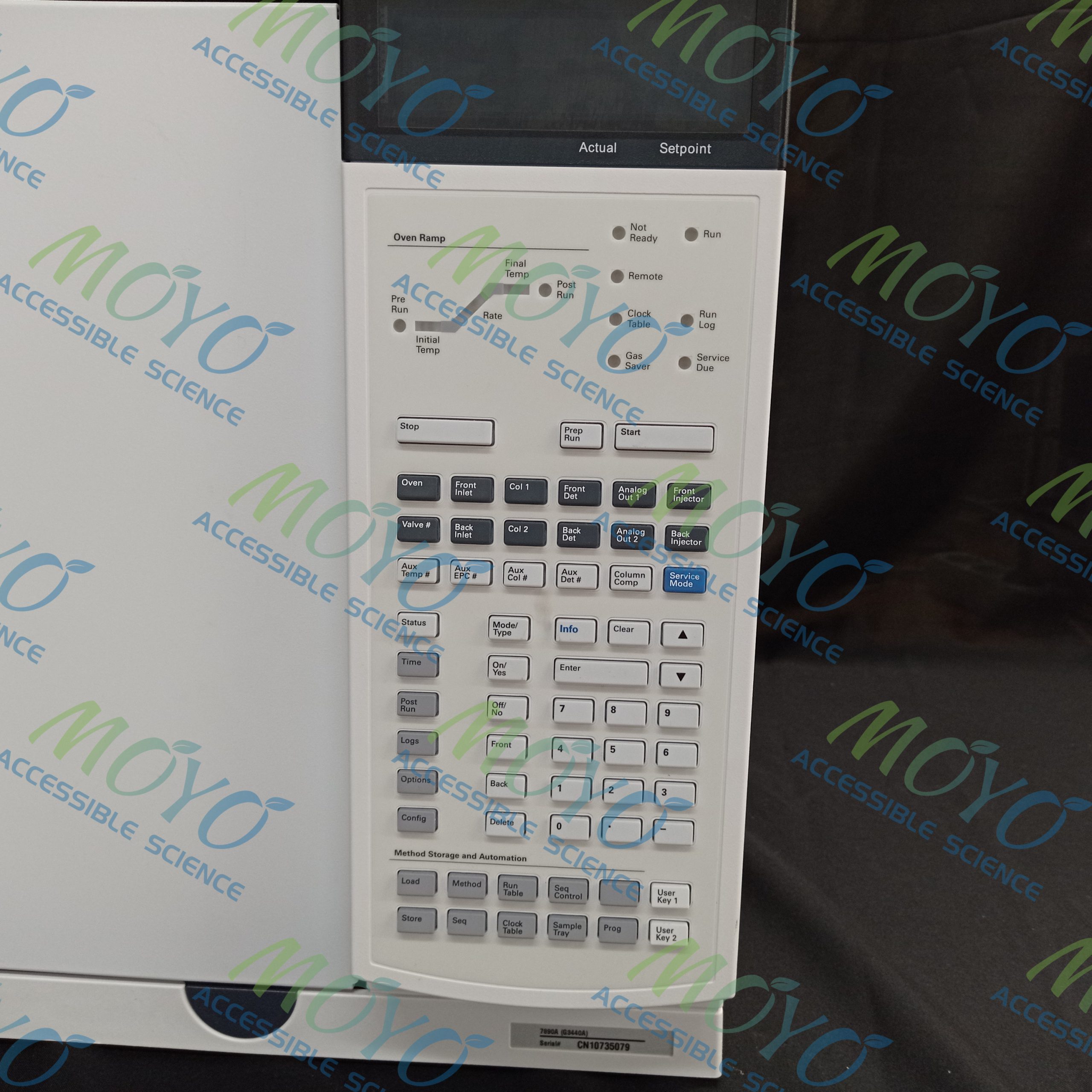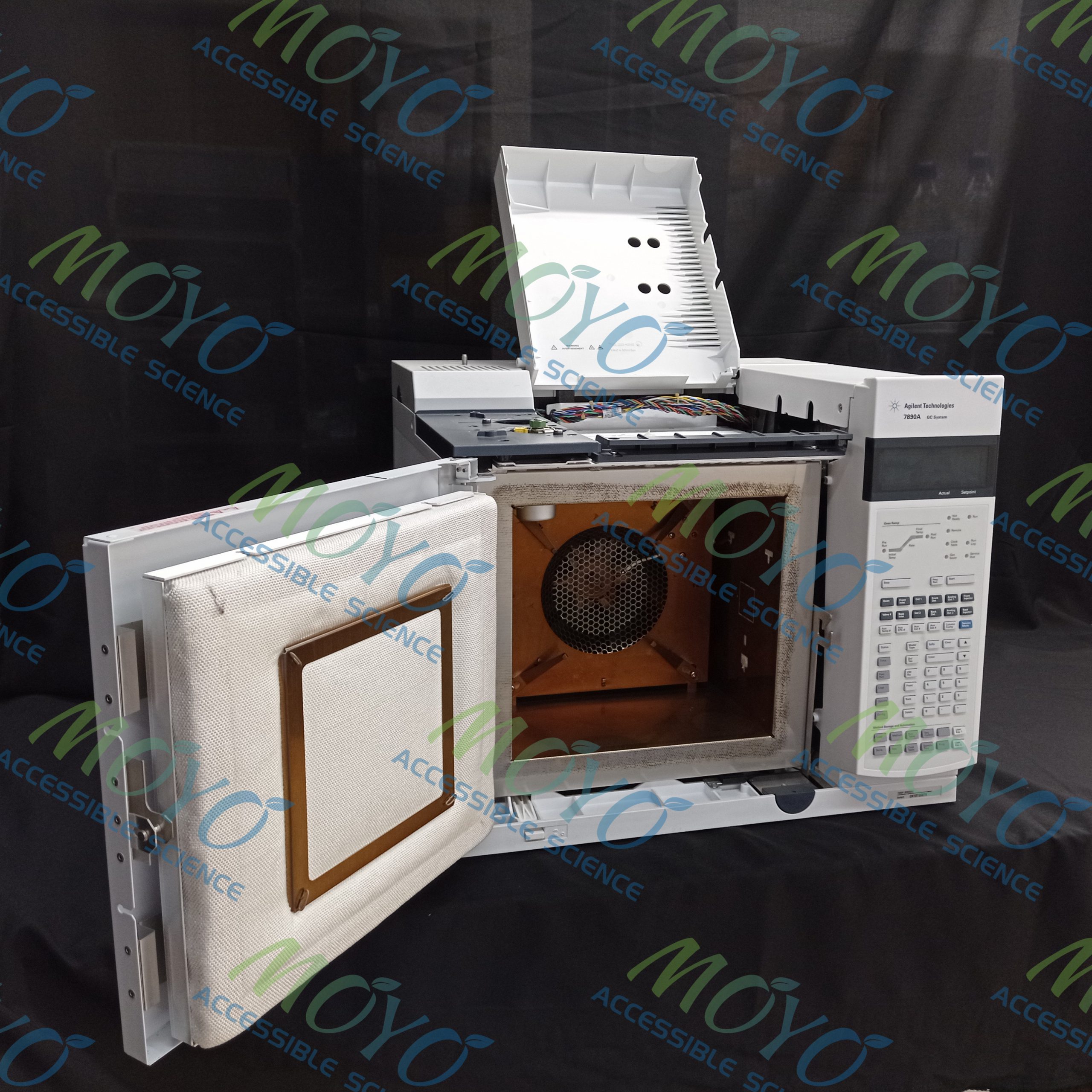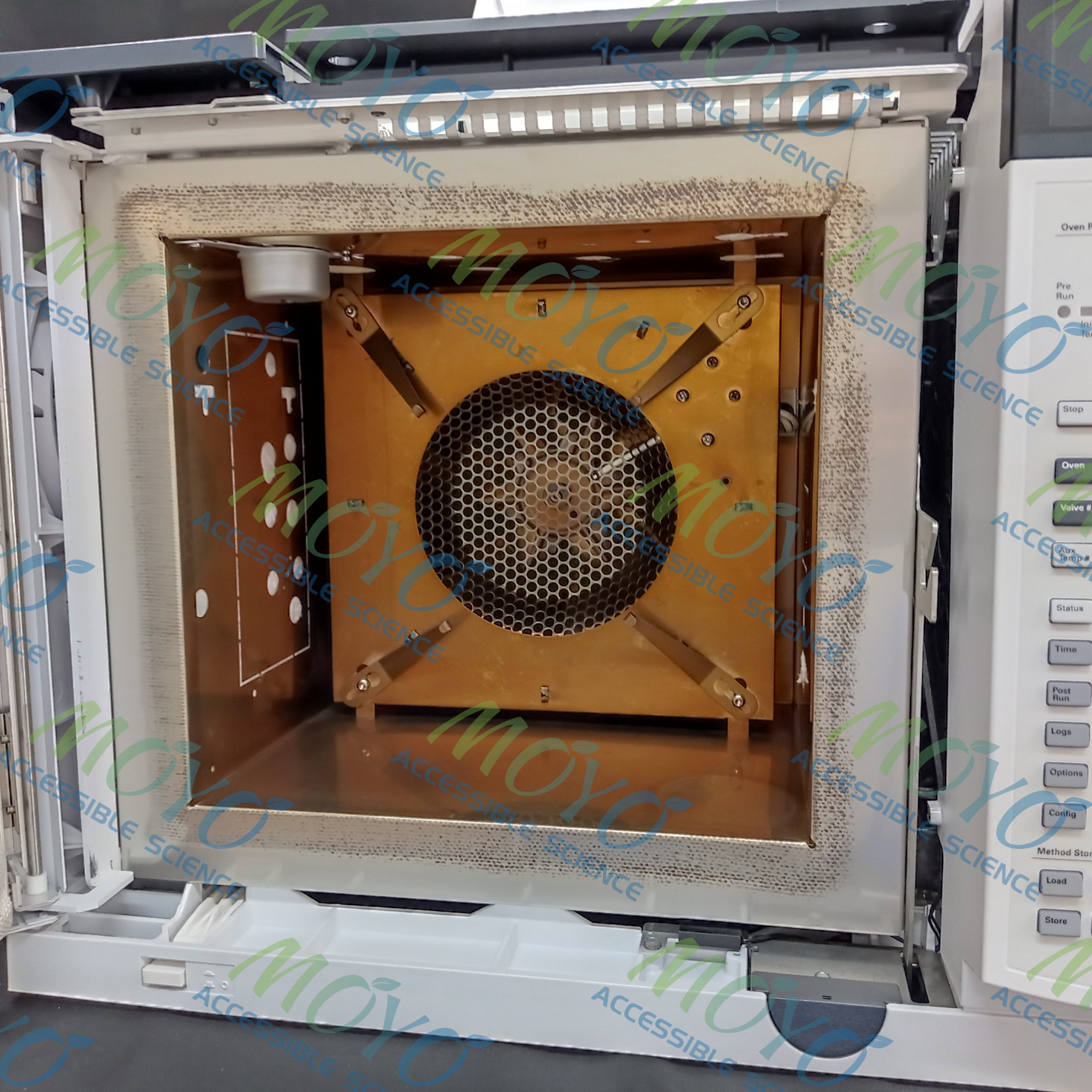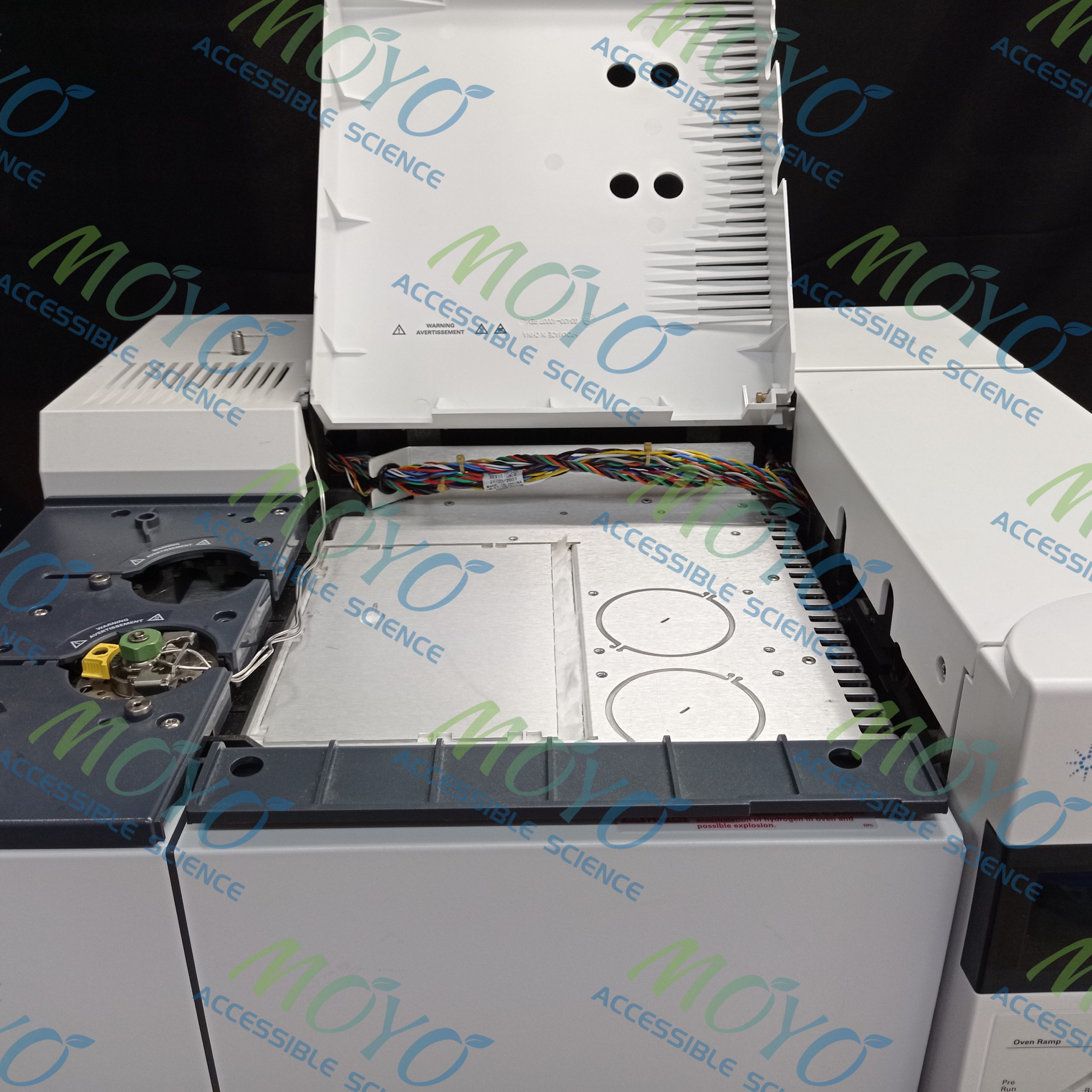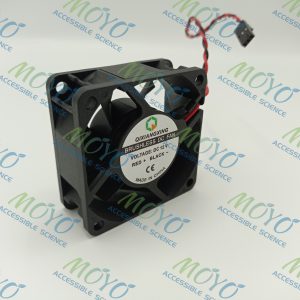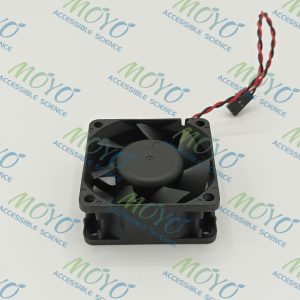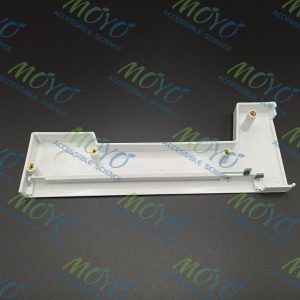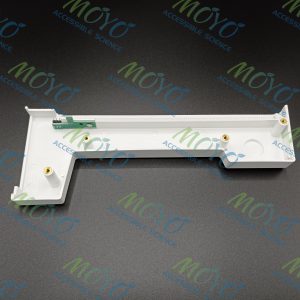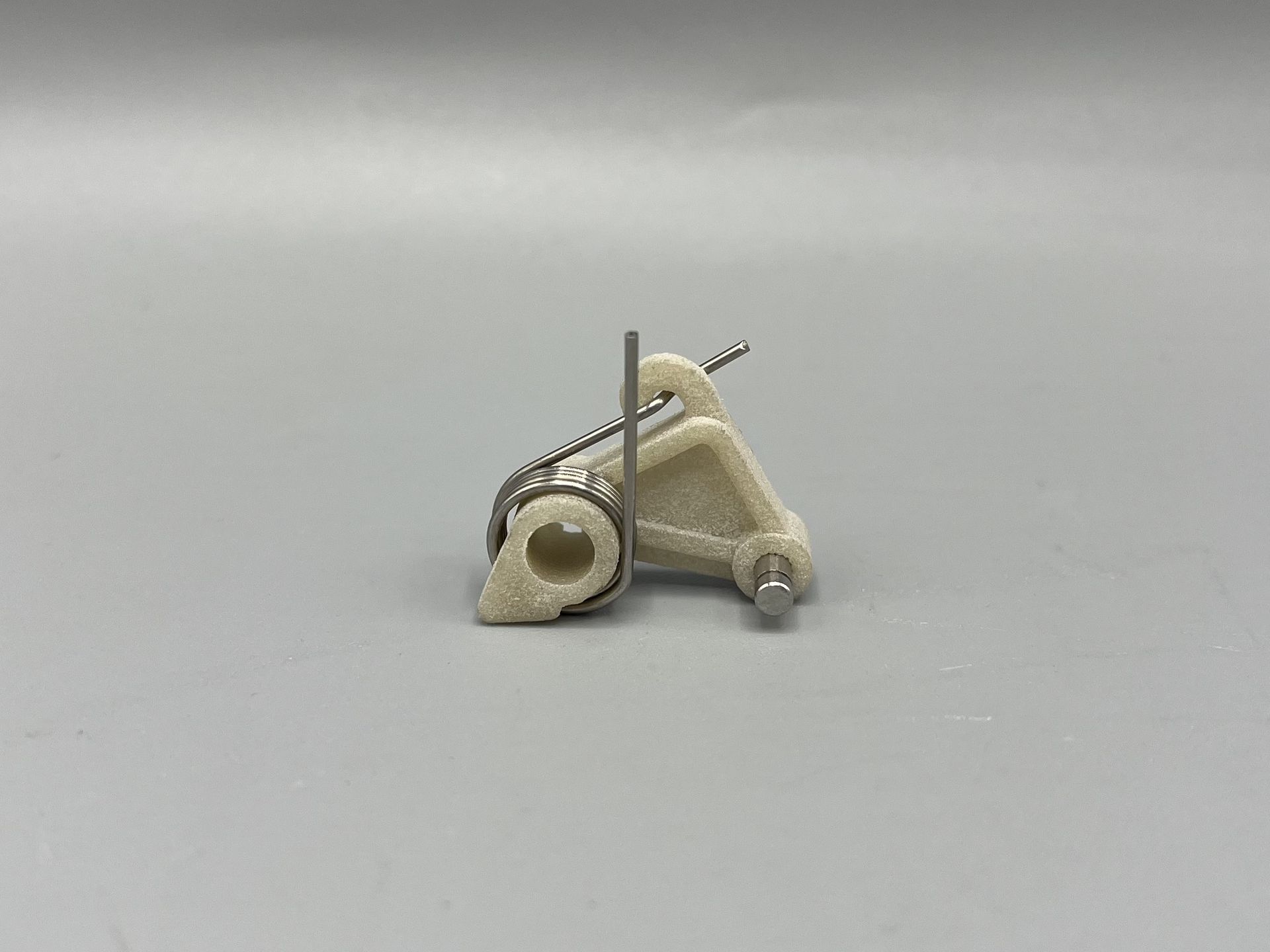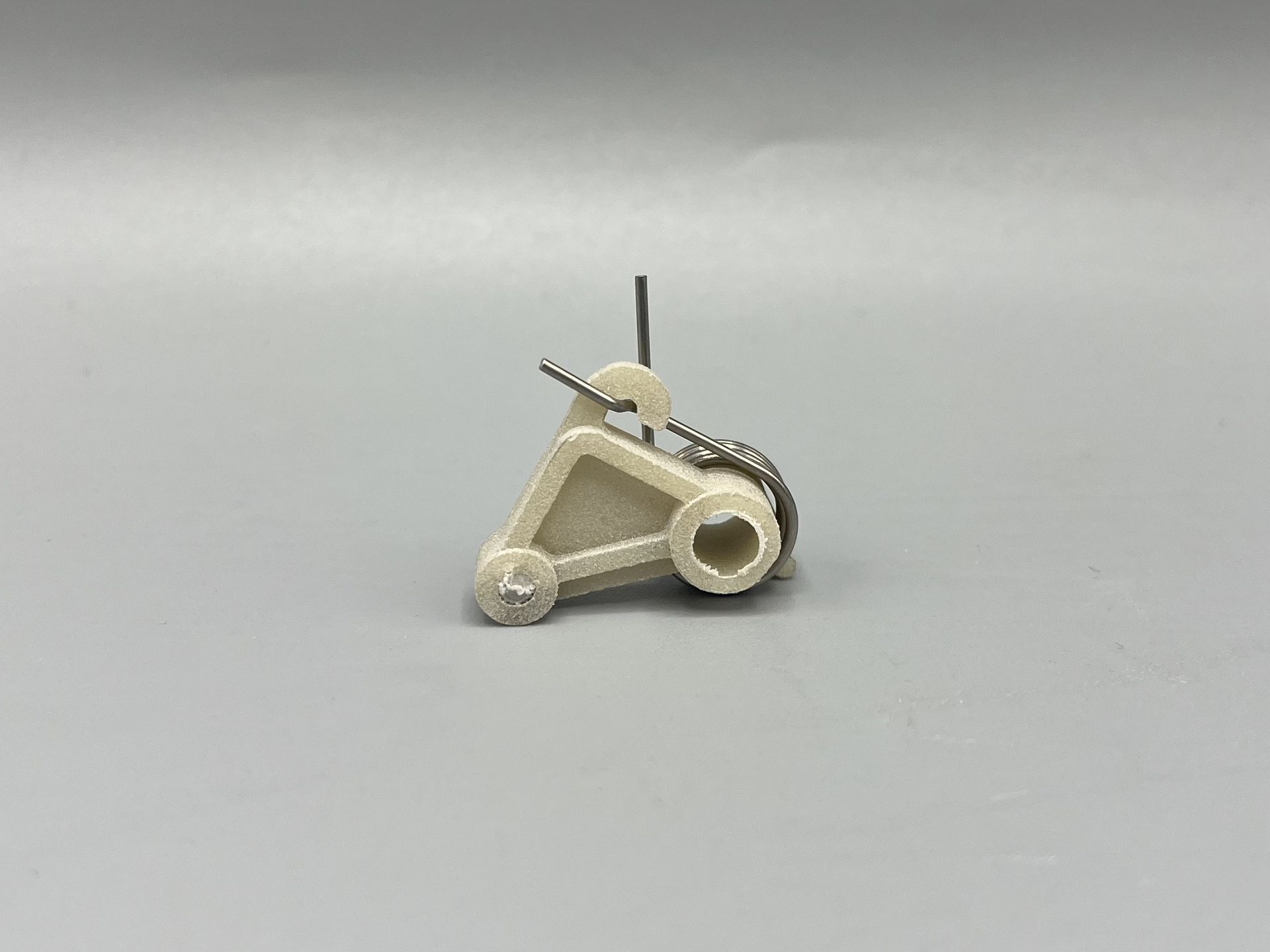| Status Message |
Possible causes |
Suggested actions |
| Fault 200 – Pneu board FPGA |
- The EPC board is unable to control the instrument’s pneumatics
|
- Replace EPC board
OR
Contact Moyo Scientific Service
|
| Fault 201 – Pneumatics board |
- The EPC board is not functioning properly for a non-specific reason.
|
- Replace EPC board
OR
Contact Moyo Scientific Service
|
| Fault 202 – Hydrogen shutdown |
- An inlet configured for hydrogen gas did not reach the pressure setpoint within 2 minutes.
|
- Check the gas supply pressure. Increase the pressure at the initial supply if it is too low to reach the setpoint.
- Check for a leak somewhere in the system. Leak test the gas supply tubing, the inlet, and the inlet column fittings.
- The column may be broken. Use the leak detector to check the column for leaks and replace the broken column or break off the cracked portion.
- An inlet proportional control valve may be stuck open or closed because of contamination or other fault. Contact Moyo Scientific Service
|
| Fault 203 – Signal DSP faulty |
- The detector’s signal processing electronics are not functioning correctly. This indicates a malfunction with the 7890 GC main PC board. The signal path will not function
|
- Turn the instrument on and then off at least one time. If the error still occurs, replace the GC Mainboard. Contact Moyo Scientific Service.
|
| Fault 204 – Sig DSP ROM broken |
- The detector’s signal processing electronics are not functioning correctly. This indicates a malfunction with the 7890 GC main PC board. The signal path will not function.
|
- Turn the instrument on and then off at least one time. If the error still occurs, replace the GC Mainboard. Contact Moyo Scientific Service.
|
| Fault 205 – Sig DSP RAM broken |
- The detector’s signal processing electronics are not functioning correctly. This indicates a malfunction with the 7890 GC main PC board. The signal path will not function.
|
- Turn the instrument on and then off at least one time. If the error still occurs, replace the GC Mainboard. Contact Moyo Scientific Service.
|
| Fault 206 – Sig DSP registers |
- The detector’s signal processing electronics are not functioning correctly. This indicates a malfunction with the 7890 GC main PC board. The signal path will not function
|
- Turn the instrument on and then off at least one time. If the error still occurs, replace the GC Mainboard. Contact Moyo Scientific Service.
|
| Fault 207 – Sig DSP data corrupt |
- The detector’s signal processing electronics are not functioning correctly. This indicates a malfunction with the 7890 GC main PC board.
|
- Turn the instrument on and then off at least one time. If the error still occurs, replace the GC Mainboard. Contact Moyo Scientific Service.
|
Fault 208/209 –
- 0-1 mV out # 1
- 0-1 mV out # 2
|
- This error indicates that the signal that the 7890 GC is sending to a stripchart recording device in position 1 or 2 is not within the acceptable range. The 7890 GC will not be ready.
|
- Turn the instrument on and then off at least one time. If the error still occurs, the GC Mainboard must be replaced. Contact Moyo Scientific Service.
|
Fault 210/211 –
- Analog out # 1
- Analog out # 2
|
- This error indicates that the signal that the 7890 GC is sending to an integrator in position 1 or 2 is not within the acceptable range. The 7890 GC will not be ready
|
- Turn the instrument on and then off at least one time. If the error still occurs, the GC Mainboard must be replaced. Contact Moyo Scientific Service.
|
Fault 212/213 –
- F det electrometer
- B det electrometer
|
- The communication cable between the FID, NPD, or ECD detector board and the detector is not connected properly.
- The electrometer is broken, or the detector board is bad.
|
- Check that the cable that connects the detector to the board is connected properly.
- If the boards are connected properly but the electrometer is still out of specification, the electrometer or detector board is broken. Contact Moyo Scientific Service.
|
Fault 214/215 –
- Front det flame out
- Back det flame out
|
- This message appears when the FID is not able to ignite or if the flame goes out during a run. During the ignition process or the run, the detector will try to ignite the flame twice; if both attempts fail, the hydrogen, air, and ignitor will shut off, and the error message will appear. The detector will be in a not ready state.
|
- Make sure the hydrogen and air are turned on and that the flow rates are high enough for the flame to ignite.
- Use an electronic leak detector to search for and correct leaks around the detector column fitting.
- Check that you are using the correct jet for your column.
- Change the Lit Offset to 0.5 (the default value).
- If problem persists, contact Moyo Scientific Service.
|
Fault 216/217 –
- F TCD filament open
- B TCD filament open
|
- The TCD filament bridge voltage indicates that the filament resistance is too high. The resistance may be too high because the filament is broken or worn thin from use, or the wires from the TCD are not connected on the detector board, or the ∆PRT is shorted. (Units made before April 1997 may not use a ∆PRT.)
|
- Check that the wires from the detector are connected on the detector board.
- Check that the ∆PRT is properly installed and not damaged. Replace if damaged.
- The TCD’s cell must be replaced. Contact Moyo Scientific Service.
|
Fault 218/219 –
- F TCD filament short
- B TCD filament short
|
- The TCD filament bridge voltage indicates that the resistance of the filament is too low, which indicates a potentially shorted filament. This condition could be caused by a worn or sagging filament, or if the wires from the TCD are not connected properly to the detector board or are touching each other, or if the wires from the ∆PRT are not properly connected to the detector board. (Units made before April 1997 may not use a ∆PRT.)
|
- Check that the filament and ∆PRT wires from the cell are connected on the detector board properly.
- The TCD’s cell must be replaced. Contact Moyo Scientific Service.
|
| Fault 220 – Heater overcurrent |
- This message appears when there is a short in the heater of a heated zone, or when a heated zone’s electronics are defective. This error does not indicate a problem with the oven.
|
- Turn off all the heated zones and turn the GC off and then on again.
- See “Fault 221 – Thermal shutdown”
- Contact Moyo Scientific Service.
|
| Fault 221 – Thermal shutdown |
- A problem with the electrical supply to the instrument
- A malfunction of the zone control electronics
- A shorted temperature sensor
- A shorted heater
|
- If you see any thermal shutdown message, first turn the GC off and on. If the error was caused by a power supply problem, the error will disappear and the instrument will become ready. If the error reappears, the main board, or one or more of the heater/sensor assemblies, must be replaced. Contact Moyo Scientific Service.
|
| Fault 222 – Oven temp too hot |
- Defective oven heater drive or a defective oven sensor
|
- To determine if the oven sensor is broken, its resistance must be tested. The resistance will be 100 ohms if the sensor is working correctly; a much larger value indicates a faulty sensor.
- If the oven sensor is operating correctly and the error persists, the GC Mainboard must be replaced. Contact Moyo Scientific Service.
- See “Fault 221 – Thermal shutdown”
|
| Fault 223 – Oven temp too cool |
- The oven temperature reading indicates the oven is less than its minimum allowable temperature. This indicates a stuck open cryo valve or a shorted oven sensor.
|
- Turn off all the heated zones and turn the GC off and then on again. If problem persists, contact Moyo Scientific Service.
- See “Fault 221 – Thermal shutdown”
|
| Fault 224 – Oven temp sensor |
- The oven temperature reading reports the oven’s temperature is lower than expected, which indicates a shorted oven sensor.
|
- Replace Oven Sensor. Contact Moyo Scientific Service.
- See “Fault 221 – Thermal shutdown”
|
| Fault 225 – F det temp too hot |
- The front detector’s temperature is higher than the maximum allowable temperature (detector type maximum temperature plus an additional 25°C). This indicates a defective heater drive on the mainboard or a defective sensor
|
- Turn off all the heated zones and turn the instrument off and on again.
- See “Fault 221 – Thermal shutdown”
- Replace Oven Assembly.
Replace GC Mainboard.
OR
Contact Moyo Scientific Service
|
| Fault 226 – F det temp sensor |
- The front detector temperature reading reports the detector’s temperature is lower than expected, which indicates a shorted sensor
|
- See “Fault 221 – Thermal shutdown”
- Contact Moyo Scientific Service.
|
| Fault 227- B det temp too hot |
- The back detector’s temperature is higher than the maximum allowable temperature (detector type maximum temperature plus an additional 25°C). This indicates a defective heater drive on the mainboard or a defective sensor.
|
- Turn off all the heated zones and turn the instrument off and on again.
- See “Fault 221 – Thermal shutdown”
- Replace Oven Assembly.
Replace GC Mainboard.
OR
Contact Moyo Scientific Service
|
| Fault 228 – B det temp sensor |
- The back detector temperature reading reports the detector’s temperature is lower than expected, which indicates a shorted sensor
|
- See “Fault 221 – Thermal shutdown”
- Contact Moyo Scientific Service.
|
| Fault 229 – F inl temp too hot |
- The front inlet’s temperature is higher than the maximum allowable temperature (detector type maximum temperature plus an additional 25°C). This indicates a defective heater drive on the mainboard or a defective sensor.
|
- Turn off all the heated zones and turn the instrument off and on again.
- See “Fault 221 – Thermal shutdown”
- Replace Oven Assembly.
Replace GC Mainboard.
OR
Contact Moyo Scientific Service
|
| Fault 230 – F inl temp sensor |
- The front inlet temperature reading reports the inlet’s temperature is lower than expected, which indicates a shorted sensor
|
- See “Fault 221 – Thermal shutdown”
- Contact Moyo Scientific Service.
|
| Fault 231 – B inl temp too hot |
- The back inlet’s temperature is higher than the maximum allowable temperature (detector type maximum temperature plus an additional 25°C). This indicates a defective heater drive on the mainboard or a defective sensor.
|
- Turn off all the heated zones and turn the instrument off and on again.
- See “Fault 221 – Thermal shutdown”
- Replace Oven Assembly.
Replace GC Mainboard.
OR
Contact Moyo Scientific Service
|
| Fault 232 – B inl temp sensor |
- The back inlet temperature reading reports the inlet’s temperature is lower than expected, which indicates a shorted sensor
|
- See “Fault 221 – Thermal shutdown”
- Contact Moyo Scientific Service.
|
| Fault 233 – Aux l temp too hot |
- The aux zone’s temperature is higher than the maximum allowable temperature (detector type maximum temperature plus an additional 25°C). This indicates a defective heater drive on the mainboard or a defective sensor.
|
- Turn off all the heated zones and turn the instrument off and on again.
- See “Fault 221 – Thermal shutdown”
- Replace Oven Assembly.
Replace GC Mainboard.
OR
Contact Moyo Scientific Service
|
| Fault 234 – Aux l temp sensor |
- Aux zone 1’s temperature reading reports that its temperature is lower than expected, which indicates a shorted sensor
|
- See “Fault 221 – Thermal shutdown”
- Contact Moyo Scientific Service.
|
| Fault 235 – Aux 2 temp too hot |
- The aux zone’s temperature is higher than the maximum allowable temperature (detector type maximum temperature plus an additional 25°C). This indicates a defective heater drive on the mainboard or a defective sensor.
|
- Turn off all the heated zones and turn the instrument off and on again.
- See “Fault 221 – Thermal shutdown”
- Replace Oven Assembly.
Replace GC Mainboard.
OR
Contact Moyo Scientific Service
|
| Fault 236 – Aux 2 temp sensor |
- Aux zone 2’s temperature reading reports that its temperature is lower than expected, which indicates a shorted sensor.
|
- See “Fault 221 – Thermal shutdown”
- Contact Moyo Scientific Service.
|
| Fault 237 – No line interrupt |
- The electronics on the main board are not functioning correctly
|
- See “Fault 221 – Thermal shutdown”
- Replace GC Mainboard. Contact Moyo Scientific Service.
|
| Fault 238 – Line interrupt |
- The electronics on the main board are not functioning correctly or there is an excessive amount of noise in the power supply to the instrument
|
- See “Fault 221 – Thermal shutdown”
- Turn the 7890 GC off and then on again. If the problem was caused by noise in the power supply, the instrument will operate normally again. If the error persists, replace the GC Mainboard.
|
| Fault 239 – No mux ADC response |
- The multiplexor, which processes the 7890 GC electronic signals, is not functioning. Most likely, the multiplexor’s circuitry is defective
|
- See “Fault 221 – Thermal shutdown”
- Replace GC Mainboard. Contact Moyo Scientific Service.
|
| Fault 240 – Mux ADC offset value |
- The multiplexor, which processes the 7890 GC electronic signals, is not functioning. Most likely, the multiplexor’s circuitry is defective
|
- See “Fault 221 – Thermal shutdown”
- Replace GC Mainboard. Contact Moyo Scientific Service.
|
| Fault 241 – Invalid line sense |
- The line sense circuitry on the mainboard is not measuring the line power correctly. Since it is indicating the power supply is not within acceptable limits, the power to the heated zones is disabled
|
- Turn the zones off to clear the error.
- See “Fault 221 – Thermal shutdown”
- Replace GC Mainboard. Contact Moyo Scientific Service.
|
Fault 242/244 –
- Aux 3 faulty fact cal
- Aux 4 faulty fact cal
- Aux 5 faulty fact cal
|
- The module installed in the aux position is not an aux module.
- The aux module is not working correctly; for example, the EEPROM could be an unsupported version
|
- Remove the module from the aux position and install the correct module
- If the problem persists, contact Moyo Scientific Service.
|
Fault 245/246 –
- F det module rev
- B det module rev
|
- The front or back detector’s EEPROM is not recognised by the 7890 GC
- The version of the module is not compatible with the version of the 7890 GC
|
- Contact Moyo Scientific Service
|
Fault 247/248 –
- F inlet module rev
- B inlet module rev
|
- The front or back inlet’s EEPROM is not recognised by the 7890 GC.
- The version of the module is not compatible with the version of the 7890 GC
|
- Contact Moyo Scientific Service
|
| Fault 249 – Aux module rev |
- The aux pressure’s EEPROM is not recognised by the 7890 GC.
- The version of the module is not compatible with the version of the 7890 GC.
|
- Contact Moyo Scientific Service
|
Fault 250/251 –
- F det wrong module
- B det wrong module
|
- The module installed in an inlet slot is unusable.
- The module is installed in the wrong position. For example, a detector module might be installed in the inlet position.
- If the correct module is installed, it may be malfunctioning or its EEPROM may be unrecognised by the 7890 GC.
|
- Make sure that the correct type of module is installed.
- If the problem persists, contact Moyo Scientific Service.
|
Fault 252/253 –
- F inlet wrong module
- B inlet wrong module
|
- The module installed in a detector slot is unusable.
- The module is installed in the wrong position. For example, an inlet module might be installed in the detector position.
- If the correct module is installed, it may be malfunctioning or its EEPROM may be unrecognised by the 7890 GC.
|
- Make sure that the correct type of module is installed.
- If the problem persists, contact Moyo Scientific Service.
|
| Fault 254 – Aux wrong module |
- The module installed in aux slot is unusable.
- The module is installed in the wrong position. For example, an inlet module might be installed in the aux position.
- If the correct module is installed, it may be malfunctioning or its EEPROM may be unrecognised by the 7890 GC.
|
- Make sure that the correct type of module is installed.
- If the problem persists, contact Moyo Scientific Service.
|
Fault 255/256 –
- F det invalid type
- B det invalid type
|
- The front or back detector module is not supported by the firmware installed in the 7890 GC.
|
- Contact Moyo Scientific Service.
|
Fault 257/258 –
- F inlet invalid type
- B inlet invalid type
|
- The front or back inlet module is not supported by the firmware installed in the 7890 GC.
|
- Contact Moyo Scientific Service.
|
Fault 259/260 –
- F det type mismatch
- B det type mismatch
|
- The detector module does not match the installed detector electronics board.
- The position of the detector pneumatics module and detectors were changed, but the detector board was not.
|
- Change the detector boards.
- If the problem persists, contact Moyo Scientific Service.
|
| Fault 261 – MIO board defective |
- The connection between the MIO PC board and the mainboard could be faulty or the MIO board is defective
|
- Reset the MIO card.
- If resetting did not correct the problem, the MIO PC board is defective.
|
| Fault 262 – RS232 defective |
- The communications between the RS232 chip and the mainboard are faulty. Most likely, the mainboard is faulty
|
- Replace GC Mainboard.
OR
Contact Moyo Scientific Service.
|
| Fault 263 – GPIB (or HP-IB) defective |
- The communications between the GPIB (or HP-IB) chip and the mainboard are faulty. Most likely, the mainboard is faulty
|
- Replace GC Mainboard.
OR
Contact Moyo Scientific Service.
|
| Fault 264 – Sampler RS232 defect |
- The communications between the RS232 chip and the mainboard are faulty. Most likely, the mainboard is faulty
|
- Replace GC Mainboard.
OR
Contact Moyo Scientific Service.
|
Fault 265/266 –
- F inlet invalid pid
- B inlet invalid pid
|
- pid is an abbreviation for the constants used in the algorithm that controls temperature. This fault means that the module calibration is no longer valid
|
- Contact Moyo Scientific Service
|
Fault 267/268 –
- F detector invalid pid
- B detector invalid pid
|
- pid is an abbreviation for the constants used in the algorithm that controls temperature. This fault means that the module calibration is no longer valid.
|
- Contact Moyo Scientific Service
|
| Fault 269 – Pneu aux invalid pid |
- pid is an abbreviation for the constants used in the algorithm that controls temperature. This fault means that the module calibration is no longer valid
|
- Contact Moyo Scientific Service
|
Fault 270/271 –
- F inlet bad cksum
- B inlet bad cksum
|
- The inlet module’s calibration is no longer valid
|
- Contact Moyo Scientific Service
|
Fault 272/273 –
- F det bad cksum
- B det bad cksum
|
- The detector module’s calibration is no longer valid
|
- Contact Moyo Scientific Service
|
| Fault 274– Pneu aux bad cksum |
- The aux pneumatics module’s calibration is no longer valid
|
- Contact Moyo Scientific Service
|
Fault 275/276 –
- F inlet bad fact cal
- B inlet bad fact cal
|
- The inlet module’s calibration is invalid
|
- Contact Moyo Scientific Service
|
Fault 277/278 –
- F det bad fact cal
- B det bad fact cal
|
- The detector module’s calibration is invalid.
|
- Contact Moyo Scientific Service
|
| Fault 279 – P aux bad fact cal |
- The aux pneumatics module’s calibration is invalid.
|
- Contact Moyo Scientific Service
|
Fault 280/281 –
- F inlet i/o failure
- B inlet i/o failure
|
- The EPC module is malfunctioning
|
- Replace GC EPC Board.
OR
Contact Moyo Scientific Service.
|
Fault 282/283 –
- F det i/o failure
- B det i/o failure
|
- The EPC module is malfunctioning
|
- Replace GC EPC Board.
OR
Contact Moyo Scientific Service.
|
| Fault 284 – Pneu aux i/o failure |
- The EPC module is malfunctioning
|
- Replace GC EPC Board.
OR
Contact Moyo Scientific Service.
|
Fault 285/286 –
- F det adjust failure
- B det adjust failure
|
- An ECD or NPD detector has failed to successfully achieve the target offset setpoint within the adjustment range
|
- Turn Off or On “Adjust Offset”.
- If the problem persists, contact Moyo Scientific Service.
|
Fault 287/288 –
- F OIM not installed
- B OIM not installed
|
- The OIM module is required by the method but is not present
|
- Contact Moyo Scientific Service.
|

